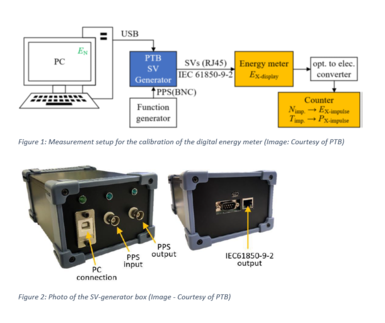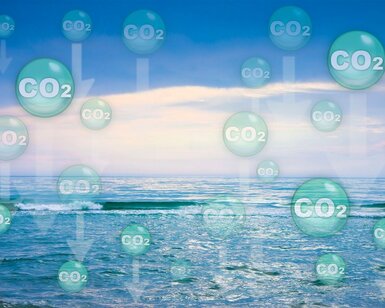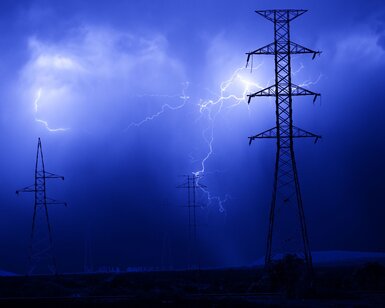Please type a search term (at least two characters)
News
EMPIR project calibrates sampled value-based digital electricity meters

Supporting measurements for next-generation digital substation instrumentation
To ensure stability under today’s increasingly complex and challenging conditions, future electrical power grids will require real-time capable control and monitoring systems. The associated digital high voltage sensors and digital metering systems will accordingly require management through accurate and reliable time synchronisation across wide areas.
The project
The recently completed EMPIR project ‘Metrology for the next-generation digital substation instrumentation’ (17IND06, FutureGrid II) has played an important role in developing metrology that will support more accurate modern power grid monitoring, enabling a more reliable electricity supply to reach end-users.
Project researchers have developed the metrology needed to close the gap in the traceability chain between measurements made in fully digitally-operated substations, as well as working on the realisation of the relevant units.
Project outcomes
To enable more precise measurements of electrical power in the future, the project has provided critical support to key standardisation organisations, and discovered missing solutions for the calibration and timing of substation instruments for the European electrical power industry.
These feats were possible by setting several project objectives; such as the development of calibration methods for testing transformers, references for the calibration of digital instruments, tools for the characterisation of devices that exploit sampled values in digital substations, and traceable reference standards for verifying time and synchronisation methods.
Supporting digital energy metering
A subsequent project task was focused around metering. The aim here was to analyse the application of an existing IEC standard to digital energy metering. To carry out calibration procedures, a European meter manufacturer provided one of their commercial digital energy meters to PTB, German’s National Metrology Institute and the coordinating institute of this particular EMPIR project. Through these calibration procedures, the project consortium have helped to improve the reliability of digital energy metering, an outcome that could, on a broader level, have a major economic impact.
For more technical details about how the project consortium calibrated a digital energy meter, see below.
Calibrating the digital energy meter
For this task, the project specifically tried to apply the IEC 61850-9-2 standard to metering – where this particular standard originally was established to describe the use of sampled values.
Until this point, there were no existing standards for digital energy meters based on sampled values. So, to work out a reasonable test plan, PTB used the standard IEC 62053-22, for static meters that measure AC electrical active energy (class 0.2 S and 0.5 S).
This set up was used to work out a test plan and the accuracy requirements of a digital energy meter. The measurement set up for the calibration of the digital energy meter is shown in figure 1. The digital energy meter was measured using a self-built sampled value generator, with its corresponding LabVIEW-based program, marked as a blue block in Figure 1. For reference, LabVIEW is an engineering system-design platform for the visual programming of National Instruments.
The sampled value (SV) generator box was considered to be a substitute for devices with digital output (e.g. Stand Alone Merging Units, or SAMUs). As such, it was possible to use this for the validation of SV-based measuring devices, without incurring any numerical loss. The developed SV generator box (shown in Figure 2) was then able to send programmed SV data over ethernet connections, using the IEC 61850-9-2 protocol.
The basic module used was a 32-bit ARM Cortex-M4 CPU with ethernet and USB port. The SV data was programmed using the USB connection. The corresponding program of the SV-generator box was mainly made up of three main functions: the SV waveform generation, the measuring functions, and the power/energy calculations. The SV waveform generation function was able to generate three‐phase, four‐wire current and voltage signals.
By using this briefly described setup, the commercial digital energy meter was tested for the following rated conditions:
Frequency: | 50 Hz |
Rated voltage: | 100 kV |
Rated current: | 1000 A |
Optical active energy output | RA = 0.1 imp / kWh |
Accuracy class | Cl. 0,2S for active energy Cl. 1S for reactive energy |
As a result of this research, the project has shown, with extensive measurements according to the test plan, that the calibrated error of the energy meter for the quantity ‘Energy’ is far below its error class of 0,2S. To optimise measurement time, other tests have been carried out for evaluating different readout methods. The main finding was that all different methods agree within 0.02% - i.e. ten times better than the error class of the meter - while the fastest readout method is 10-30 times faster than the slowest readout method.
Enrico Mohns (PTB, Germany), the project coordinator, comments further:
“A modern and sustainable form of energy generation is one of the current key issues of our time. On the other hand, there will always be a need for a suitable measurement technology and instrumentation in the transmission and distribution grid, with which the imported or exported energy can ultimately also be measured and billed.
The project has focused on the new sampled values-based digital instrumentation in high-voltage substations. The presented results show that digital energy meters can be correctly evaluated, respectively calibrated. This provides the much-needed calibration service for energy meter manufacturers, and ultimately it creates confidence in this new metering technology for grid operators.”
To find out more, visit the project’s own webpage >>
This EMPIR project is co-funded by the European Union's Horizon 2020 research and innovation programme and the EMPIR Participating States.
Want to hear more about EURAMET?
Sign up for EURAMET newsletters and other information
Follow us on LinkedIn and Twitter
Carbon dioxide, released from man-made activities, is lowering the pH of the Earth’s oceans, and impacting the health of marine organisms worldwide more
Supporting automated and reconfigurable manufacturing systems more
Working with external project Cool White to test and suggest improvements on the locally available white paints more
The project FutureEnergy has provided new calibration services for ultra-high voltages and a good practice guide on Lightning Impulse dividers more
For many of the 5000 photonics companies in Europe a precise knowledge of a material’s optical properties is vital for industrial competitiveness more





